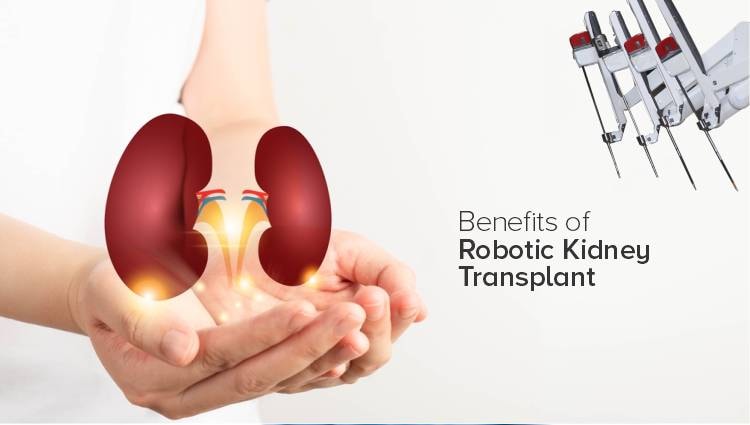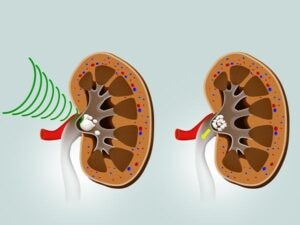Kidney Transplantation
Kidney transplantation is the gold standard for end stage renal disease (ESRD).
New advancements in surgery have led to minimally invasive surgery (MIS) for kidney transplantation.
Robot assisted kidney transplantation (RAKT) is the way to go for multi vessel grafts and has better outcomes than open surgery.
Traditional Method
Open kidney transplantation (OKT) is the old way of doing kidney transplantation.
OKT has a lot of morbidity and mortality; post op pain, surgical site infection, delayed mobilization. Living donor kidney transplantation has better recipient and organ survival than deceased donor transplantation, so shorter waiting time and better graft quality with living donation.
The old way has limitations; longer recovery time and more complications.The old way has limitations; longer recovery time and more complications. Furthermore, the kidney transplant success rate can be significantly improved with the adoption of minimally invasive techniques, which reduce the risk of complications
Minimally Invasive
Minimally invasive surgery (MIS) has changed the face of surgery including kidney transplantation. Robotic surgery is a big advancement in MIS which gives precision and allows minimally invasive surgery and better outcomes especially for high risk patients due to obesity or other factors.
MIS has several advantages; less post op pain, shorter hospital stay and better cosmetic results.
Laparoscopic donor nephrectomy is a minimally invasive way of living donor kidney transplantation.
Robot Assisted Kidney Transplantation
Robotic kidney transplantation (RKT) is a minimally invasive surgery that uses a robotic system for kidney transplantation.
RAKT has several advantages; precision, less blood loss and shorter recovery time.
RAKT is the way to go for kidney transplantation especially for obese patients and complex vascular anatomy.

Surgical Techniques in Minimally Invasive Kidney Transplantation
Vattikuti-Medanta technique is a standardized technique for RAKT which uses regional hypothermia to minimize warm ischemia time. Robotic transabdominal kidney transplantation is a new technique which gives better outcomes especially for patients with complex anatomy; morbidly obese patients by reducing kidney transplant complications and shorter recovery time compared to open robotic surgery. This is ideal for morbidly obese patient as it can give good outcome even for high risk patients due to obesity.
Gasless and scarless surgery is new technique in RAKT which gives better cosmetic results and less post op pain.
RAKT with multiple vessels is a tough procedure which requires advanced surgical skills and experience.
Physiological Considerations
Physiological considerations in RAKT includes pneumoperitoneal injury to the graft kidney and effect on renal function.
Regional hypothermia is used to minimize warm ischemia time and protect the graft kidney during RAKT. Prospective patient monitoring is important during this phase to ensure patient safety and good outcome as surgeons get used to new technique.
Robotic assisted surgery allows precise dissection and suturing, less complications and better outcomes.
Outcomes and Complications
RAKT has similar outcomes to OKT; graft survival and patient survival. Kidney transplant recipients can benefit from RAKT because of precision and less complications especially in overcoming obesity. Complications of RAKT are delayed graft function, surgical site infection and vascular complications. Robotic assisted surgery reduces complications and improves outcomes in renal function and kidney transplantation.
Patient Selection and Preparation
Patient selection and preparation is important in RAKT. Ideal candidate for RAKT is a patient with end stage renal disease (ESRD) with a living donor. The donor should be a healthy individual with compatible blood type and negative cross match.
Before surgery, the recipient undergoes a thorough evaluation; blood tests, imaging studies and physical examination. The donor also undergoes the same evaluation to ensure they are fit to donate a kidney.
Recipient and donor are also educated about the risks and benefits of RAKT; complications such as delayed graft function, rejection and infection. They are also informed about the outcomes; improved kidney function and quality of life.
Besides medical evaluation, recipient and donor also undergo psychological evaluation to ensure they are emotionally ready for surgery and post op recovery.

Postoperative Care and Rehabilitation
Postoperative care and rehabilitation is important in patients undergoing robotic assisted renal transplantation (RAKT). The goal of post op care is to have smooth and safe recovery, minimize complications and promote optimal graft function.
Immediately after surgery, patients are monitored in a dedicated transplant unit. Monitoring includes regular check of vital signs, fluid balance and kidney function. Advanced monitoring helps in early detection of any potential complications such as delayed graft function or surgical site infection.
Pain management is an important part of post op care. Minimally invasive kidney transplantation including RAKT has less post op pain compared to open kidney transplantation. But effective pain management is still important to ensure patient comfort and early mobilization.
Early mobilization is encouraged to reduce risk of deep vein thrombosis and to promote faster recovery. Patients are encouraged to start moving and walking as soon as possible after surgery under the guidance of the healthcare team.
Nutritional support is also part of post op care. A balanced diet with essential nutrients helps in healing and overall health. Patients are given dietary guidelines to follow during their recovery.
Rehabilitation is a multidisciplinary approach; physical therapy, occupational therapy and psychological support. Physical therapy helps patients regain strength and mobility, occupational therapy helps them to perform daily activities independently. Psychological support helps patients to cope with emotional and mental challenges of kidney transplantation.
Follow up appointments are scheduled to monitor the patient’s progress and the function of the transplanted kidney. These include blood tests, imaging studies and consultation with the transplant team. Continuous monitoring and early intervention is important to ensure long term success and optimal outcome for kidney transplant patients.
In summary, post op care and rehabilitation is important part of the recovery process for RAKT patients. A comprehensive and multidisciplinary approach will have smooth recovery, minimal complications and long term success of the transplant.
Expanding Indications
RAKT is a minimally invasive surgical technique that is safe and effective for many patients including those with complex medical conditions. The indications for RAKT is expanding and now being considered for patients who were previously considered high risk for open kidney transplant.
One of the expanding indications for RAKT is robotic assisted kidney transplantation in obese patients. Obesity is a risk factor for kidney disease and obese patients are at higher risk for complications during and after surgery. But RAKT has been shown to be safe and effective in obese patients and may have advantages over open surgery; less blood loss, less post op pain and faster recovery time.
Another expanding indication for RAKT is robotic assisted kidney transplantation in patients with complex vascular anatomy. Patients with complex vascular anatomy are at higher risk for complications during and after surgery but RAKT has been shown to be safe and effective in these patients. The robotic system allows precise dissection and suturing of blood vessels which can reduce complications and improve outcome.
Global Adoption and Standardization
RAKT is a rapidly growing field and being adopted by transplant centers around the world. But standardization of the technique and training of surgeons is needed to ensure patients get the best care.
ISN and IST have established guidelines for RAKT including patient selection, surgical technique and post op care. These guidelines are based on evidence and intended to standardize and improve outcome.
Besides the guidelines, there is also need for continuous education and training of surgeons to ensure they are proficient in RAKT. This includes training in the robotic system, surgical technique and management of complications.

Ethical Considerations
-
RAKT has ethical considerations; whether robot assisted transplantation provide similar or better technical vascular anastomosis than open surgery.
-
Surgeons should ask themselves can they provide as good or better transplant graft and patient outcome with RAKT compared to open implant and discuss this with patient during consent.
-
Regular appraisal of surgical ability and outcome and institutional support for pioneering intervention is important for safe and efficient progress.
Next
-
Future of RAKT is development of new technologies and techniques like artificial intelligence and augmented reality.
-
Robotic assisted surgery will continue to evolve with more precision and less complications.
-
RAKT will expand indications for kidney transplantation with better outcome and less complications.
Conclusion
Robotic assisted kidney transplantation (RAKT) has changed the face of transplant surgery, a minimally invasive approach with many benefits; faster recovery, less pain and smaller incision. The technique has evolved over time with improvement in robotic technology and surgical technique. Vattikuti-Medanta technique which uses regional hypothermia to minimize warm ischemia time has been widely adopted and has shown good results especially in obese patients who would not have got open kidney transplant otherwise.
Robotics in kidney transplantation has been shown to be safe and effective with high success rate and low complication rate. It has been used in living donor kidney transplantation and deceased donor transplantation. Benefits of RAKT are less blood loss, less post op pain and shorter hospital stay.
But RAKT has its challenges; high cost of robotic equipment, limited availability of trained surgeons and need for more research to standardize the technique. Despite these challenges RAKT can become a widely accepted treatment for end stage renal disease patients.
